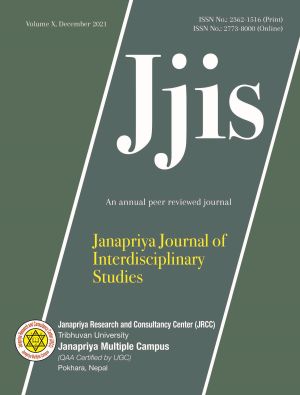Occupational Change and Socioeconomic Status among Dalit Communities in Kaski District
DOI:
https://doi.org/10.3126/jjis.v10i01.42613Keywords:
Bishowkarma, caste, communities, status, Dalit, Nepali, occupational change, Pariyar, socioeconomicAbstract
The purpose of the study is to examine the occupational change, socio-economic status among, and the inherent association between occupational changes and socioeconomic status. This study has conducted among the people of Nepali, Pariyar, and Bishwokarma caste of the Dalit communities in the Kaski district of Nepal using the quantitative nature of the information collected from primary sources with the help of a structured questionnaire. The total sample of this study is 300 head of the family member covering 150 from each urban and rural geographical region consisting of 50 from each caste. The data and results show the involvement in a particular occupation in the past and at present have significant variation, as well as the tendency of leaving the caste-based traditional occupation and adopting new & modern occupations is high. From the overall economic perspective, Nepali caste people stand at the first position followed by Bishowkarma, and the last position occupied by Pariyar. While looking from the socio-cultural perspective, Bishowkarma caste people stand at the first position followed by Nepali, and the last position occupied by Pariyar. At the regional level, residence of urban areas have a better overall economic and socio-cultural position compared to the rural areas. However, test statistics reveal the economic status is statistically significant at the caste and regional level whereas, the socio-cultural status is not statistically significant at both caste and regional levels. Finally, while investigating the association between occupational change and socioeconomic status, the results reveal that the overall economic status is the best of those people who have completely changed their past occupations while the overall socio-cultural position is the best of those who have not changed. However, these variations are not statistically significant.




